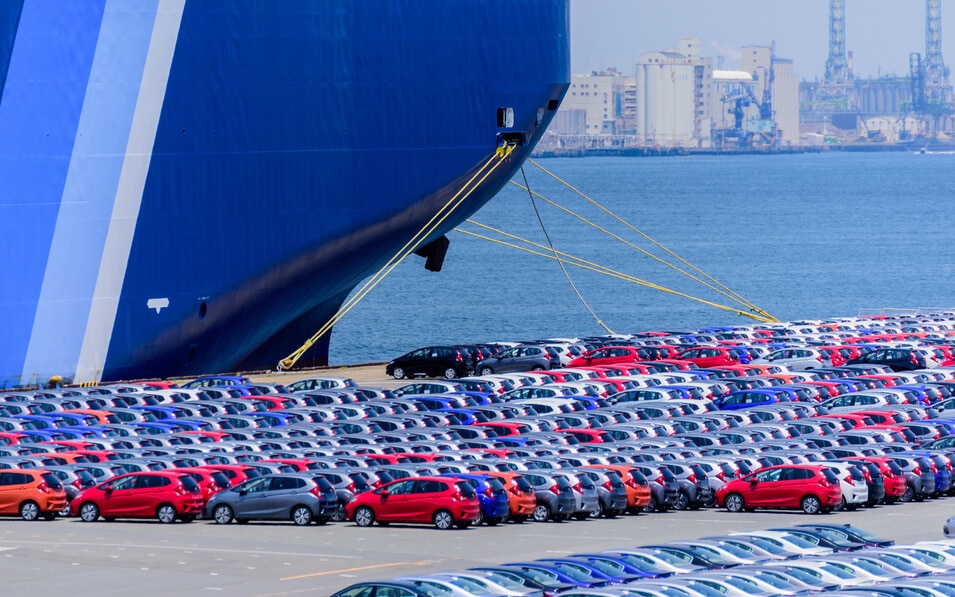
RTLS 1.0 vs. 2.0: How Next-Generation FVL Solutions Deliver Clear, Fast ROI
With high-value inventory like vehicles, time is money. With today’s supply chain challenges, including low inventory and labor shortages, poor vehicle tracking within a yard increasingly means lost sales.
Speed, accuracy, and visibility in vehicle logistics matter more than ever to OEMs and their bottom lines, which is why many are considering upgrades to their real-time tracking location services (RTLS) solutions.
While RTLS 1.0 solutions offer some value and visibility, they fail to unlock the same ROI as the later generation of technology: RTLS 2.0. Below, we explore some of the biggest limitations of RTLS 1.0 technology and how it compares to the low-cost, cloud-powered 2.0 solutions now available.
Limitations of RTLS 1.0
There are three main reasons why previous generation technology struggles to meet today’s investment justification criteria:
1. Heavy infrastructure costs
RFID-based solutions require fixed gates to scan and read tags at certain points, like when a vehicle has reached an accessory-installation station. Generally, this technology requires yard entry and exit readers, as well as intermediate location points.
Alternatively, equipment that uses cellular connections requires expensive onsite towers to create a local network. Otherwise, users will need third-party contracts to enable cellular data for each device they want to track.
In either case, costs and installation times often extend ROI by 12-18 months, which is often too long to justify the capital expenditure.
How RTLS 2.0 technology helps:
Next-generation RTLS technology reduces infrastructure and communication costs. Rather than building cellular towers or incurring third-party network costs, companies can use one or two simple radio devices to connect all GPS tags within a large yard or terminal area by leveraging the cloud. With the power of a large cloud network, a simple radio can cover yards that stretch even hundreds of acres.
Many newer RTLS 2.0 providers also offer technology solutions as a service. So rather than an OEM or logistics provider investing hundreds of thousands of dollars upfront to purchase physical tags and wireless equipment, they can pay for the entire solution on a subscription basis. For monthly fees, users rent tags and equipment, along with software and integrations. This approach supports a faster ROI by shifting a significant portion of the investment from upfront capital expenditure to running operational costs.
2. Natural disruption
Companies using 1.0 technology also see a limited ROI because many of those solutions are prone to natural disruption or human error. For instance, workers can miss a barcode scan, and bad weather can obscure barcodes and interfere with RFID-based readers.
How RTLS 2.0 technology helps:
Because 2.0 technology leverages the cloud, it ensures vehicle location accuracy to within a few feet. This reduces the search time for a vehicle to effectively zero, while removing the amount of labor required to search for vehicles in yard audits — and with less labor, there is less chance of human error.
3. Limited tracking ability
First-generation technology, which often depends on scans or gate reads, only provides information on the location of a vehicle at one of those set points. Even using in-vehicle telematics has such drawbacks. Assuming a telematics system is present in each vehicle and is activated before it is handed over to customers, vehicles can only be tracked when the ignition has been started. Because of that, vehicle locations are not updated over many points in the supply chain, including transit on rail, trucks, or vessels.
How RTLS 2.0 technology helps:
Next-generation solutions with low data latency provide real-time, high accuracy tracking that lets operators know where all vehicles are at any given time. This feature makes them a much more powerful tool for making decisions that avoid disruption and promote operational optimization.
Additional RTLS 2.0 Features
Of course, RTLS 2.0 technology doesn’t only address the limitations of older solutions; it also offers new features that provide a range of benefits:
1. Smart and affordable hardware
While cloud- and AI-powered software capabilities are key to RTLS 2.0 technology, the software must be combined with smart and affordable hardware. For example, low-power, wireless radios can enable surprisingly long-range communication. And, tracking tags that incorporate an accelerometer and GPS technology can take readings of a vehicle whenever it moves and wirelessly transmit its position to the cloud.
2. Advanced data and analytics
Because new technology can precisely track vehicle movement, users benefit from helpful data and analytics that can inform KPIs like dwell time or slow-moving inventory. For example, some solutions allow users to set geofencing alerts, which are triggered when vehicles enter or leave pre-determined zones or points within a terminal.
3. Ease of use
Compared to older generation vehicle location technologies, RTLS 2.0 solutions are intuitive, easy to use, and work right out of the box. They don’t require a systems integrator, and instead come pre-integrated with software, ready to deploy.
Vehicle tracking has moved into the post-cloud, post-AI era — but relatively few OEMs and yard operators have moved with it. However, as the industry and consumer needs shift, RTLS 2.0 can enable more digitized supply chains and distribution models, and lead to a higher and faster ROI.
To learn more about how RTLS 2.0 technology can support advanced tracking for vehicle logistics, download the eBook, “Productivity Gains in Real Time: Unlocking ROI in Vehicle Logistics Tracking Solutions.”


